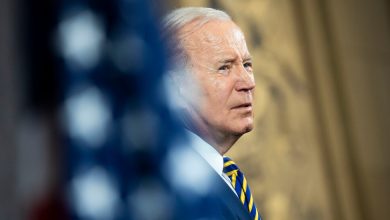How to Turn Third Parties from Spoilers to Winners

On June 7, I won the Democratic Party primary in New Jersey’s Seventh Congressional District, on my way to what I hope will be my third term in the House. The same day, I also accepted the nomination of the new Moderate Party, formed substantially by state Republicans fed up with the extremism of a party led by Donald Trump.
The Moderate Party is an experiment: an alliance between Democrats of all stripes, independents and moderate Republicans hoping to win an election while pursuing a reform to the election laws that could empower swing voters to save our democracy from toxic polarization.
Third-party candidates have long been viewed as spoilers in American politics, for good reason. Ralph Nader and Jill Stein had no chance of winning the presidency, yet drew enough votes from Al Gore in 2000 and Hillary Clinton in 2016 to help tip those elections to Republicans. On the right, libertarian candidates tend to draw votes away from Republicans.
It doesn’t have to be that way. In several states, including New York and Connecticut, third parties can channel their energy into endorsing and placing on the ballot candidates who also run as Democrats or Republicans, giving their members the option to cast tactical votes for a major party candidate under a banner that better reflects their values. This is known as fusion voting, when two parties “fuse” and form a coalition to support the same candidate.
Fusion parties were common in 19th century America. During the 1890s in North Carolina, for example, Republicans and Populists ran a unified slate that temporarily ousted the white supremacist Democratic majority.
In New York, the main parties operating under this system, the Working Families and Conservative Parties, occupy the left and right wings of the political spectrum. But if fusion parties were permitted nationwide, the political force most likely to form one would be the center. Such a party might be especially attractive to Republicans disgusted with their national party’s embrace of election lies, vaccine denial and QAnon conspiracy theories, but who are turned off by the left wing of the Democratic Party and remain reluctant to pull its lever.
I represent the median Congressional district in America — half the districts are more Democratic, and half more Republican. The voters I meet every day in my district have views that defy tribal party stereotypes, no matter which party they have registered with.
They support the police whether it’s protecting our homes from criminals or our Capitol from insurrectionists. They think we should enforce our immigration laws, but that our economy needs — and our nation should welcome — legal immigrants. They’re pro-business, but think corporations should pay taxes, and that the success of American business depends on leading the world to clean energy. They support the Second Amendment, but with reasonable restrictions like background checks and red flag laws.
In the small towns and suburbs I represent, there is also a yearning for community. They want politicians to focus on fighting inflation, not fueling culture wars.
Thanks to gerrymandering, it’s been estimated that only around 40 of America’s 435 House districts are truly competitive. Most elections are thus decided in primaries that push Democrats left and Republicans right, encouraging each side to fight and block the other rather than find common ground. Even in middle- of-the-road districts like mine, primaries can give an advantage to more extremist candidates. For example, the Republican nominee in my race, Tom Kean Jr., was once seen as a moderate. But this year, facing a contested primary, he sent a mailer to voters bragging that “no matter what Trump does, Kean has his back.”
A centrist fusion party could restore to Americans in the middle some of the leverage they have lost. We’re hoping New Jersey will be a test case for national reform. My state banned fusion parties in 1921, under the influence of major party machines. The new Moderate Party is filing a legal challenge to this law, arguing that Americans have a right to form parties that nominate the candidates of their choice.
Imagine if my Republican House colleagues Liz Cheney and Adam Kinzinger could form a party of moderate voters and offer the validation that comes with its line on the ballot to the next Democratic presidential nominee — so long as that nominee promised to respect the Constitution and to govern from the center. If I were to win my congressional race by, say, two points, and five or 10 of those points came from supporters of the Moderate Party, I would work hard to keep their support. After all, if I didn’t, they could endorse someone else — possibly a Republican — in the next election.
Our political system today rewards and encourages divisiveness that has already led to violence and could tear our country apart. We need new rules that promote responsible leadership and cooperation.
Tom Malinowski, Democrat of New Jersey, represents the Seventh Congressional District.
The Times is committed to publishing a diversity of letters to the editor. We’d like to hear what you think about this or any of our articles. Here are some tips. And here’s our email: [email protected].
Follow The New York Times Opinion section on Facebook, Twitter (@NYTopinion) and Instagram.





